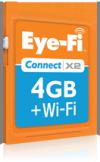|
One of the challenges in understanding Islamic terrorism is how
foreign it seems to us Americans. Norwegian terrorist Anders Breivik's
manifesto is interesting in that it gives Westerners religious and
culturally inspired terrorism "on our side," in plain English with
familiar Christian and Western imagery. Breivik's actions and rhetoric
seem extremist to sensible Westerners; jihadist literature must seem
equally extremist to sensible people in the Islamic world.
Breivik's document is rational, well researched, coherent. At 1500 pages it rambles a bit, you can get a sense of the ground he's covering via the table of contents (Scribd, Pastebin). He writes a history of the conflict between Islam and Christianity, a detailed rejection of various European modern philosophy, a curated collection of essays about the "threat" of Islam spreading in Europe. And then a detailed, apparently accurate manual about how to become a one man killing machine complete with armor, weapons, bombs, pharmaceutical enhancements. Tragically, all this research actually worked for Breivik and he was able to murder 70+ defenseless people on summer holiday.  Each Christian must now make their own personal decision on all of this. You can either choose to learn how to rise up in the power of your Lord and Saviour and learn how to become a true warrior in the Lord, or you can continue to keep your head in the sand and oppressor after oppressor keep beating you down. Breivik here sounds exactly like a violent jihadi. Later in his manifesto he addresses this criticism: By propagating and defending Christendom we simply mean that we want to halt the cultural Marxist/multiculturalist attacks and systematic deconstruction on our Christian cultures and the Church itself and to reverse the de-Christianisation of Europe. ... Western Europe has grown weak and decadent and will be completely annihilated culturally unless we succeed to implement a second European renaissance and reverse the damage done. Reading this screed helped me better understand the violent Muslim equivalent, the rhetoric around a new caliphate and the establishment of pure Islamic states governed by Sharia. Those Middle Eastern concepts sounded foreign to me but Breivik's similar ideas are comfortably English and Christian and European. And just as hideous. There may be discussion on Google+
 A lot has been written about the emergence of the hashbang convention
for web applications, URLs like https://twitter.com/#!/nelson
that use # anchors to do fancy Javascript things. But most
people I've talked to don't know the real purpose of the #!
convention, making Google's life easier.
A lot has been written about the emergence of the hashbang convention
for web applications, URLs like https://twitter.com/#!/nelson
that use # anchors to do fancy Javascript things. But most
people I've talked to don't know the real purpose of the #!
convention, making Google's life easier.
Googlebot is essentially blind to Javascript content. It (mostly) treats web pages as static text and refuses to execute any code on the page. That means that Google is incapable of indexing pages that rely on Javascript to render correctly. Not just fancy AJAX web apps, either. Google can't index web pages that render pages client-side, or customize the display in Javascript, or do much of anything dynamically. My recent wind history project is essentially invisible to Google, for example. Enter the hashbang convention, well documented by Google. The #! part is incidental; the spec is all about how site designers need to create a whole second set of statically generated HTML pages just for Googlebot, all behind URLs that include _escaped_fragment_ in their paths. There's a 1:1 mapping between the #! URLs for humans and the _escaped_fragment_ URL for robots. My Twitter page at https://twitter.com/#!/nelson, for example, also exists at http://twitter.com?_escaped_fragment_=/nelson. A special page just for bots, which Google dutifully translates to #! URLs for humans. It's all a big, gross, well-intentioned hack to work around a fundamental limitation in Google's indexing technology. I don't quite understand why Google hasn't tackled this core problem and figured out a way to run Javascript while indexing. It seems bad that Google can't see the web the way users see it. Google has an amazing Javascript engine, of course, and more than enough skilled engineers to apply it to web indexing. It may be a scaling problem; running code for a page would probably increase their indexing workload by 10x to 100x. Or it may simply be that Google feels with its market power they can require every modern web site in the world to build a special version just for them. Hopefully I'm too pessimistic and Google is working on indexing Javscript content already.  The Eye-Fi
guys have a new trick, uploading photos from a digital camera
wirelessly to your iOS or Android device and from there, to the
Internet. The core tech is an SD card with a wifi network magically
shoehorned into it.
The Eye-Fi
guys have a new trick, uploading photos from a digital camera
wirelessly to your iOS or Android device and from there, to the
Internet. The core tech is an SD card with a wifi network magically
shoehorned into it.
I had a lot of fun on my recent trip posting photos via Twitter. It was like sending postcards, some 92 images with bits of text day to day. Only problem is they're crappy camphone images. Now I'm home and have a stack of 500 good photos taken with a real camera but without the enthusiasm of immediacy to edit and upload them. If only I had a way to upload photos from my real camera during my trip! Well I did, via the Eye-Fi, but I only found out about it when I got home. The magic is direct mode. The Eye-Fi SD card not only can join wireless networks, it can form its own ad hoc wifi network solely to beam photos to other devices. The Android and iOS apps are smart enough to find this little private network and get your data. It's a total hack but a clever one. Makes me wonder a bit what the point of Bluetooth ever was. I should note that Eye-Fi has had the ability to upload photos to the Internet for a lot longer. The problem is with only your digital camera as a user interface, you had no good way to choose and edit the photos before uploading. The iPhone (or better, iPad) is a perfect solution. Also this route lets you upload via any 3G network your device has. |
||
